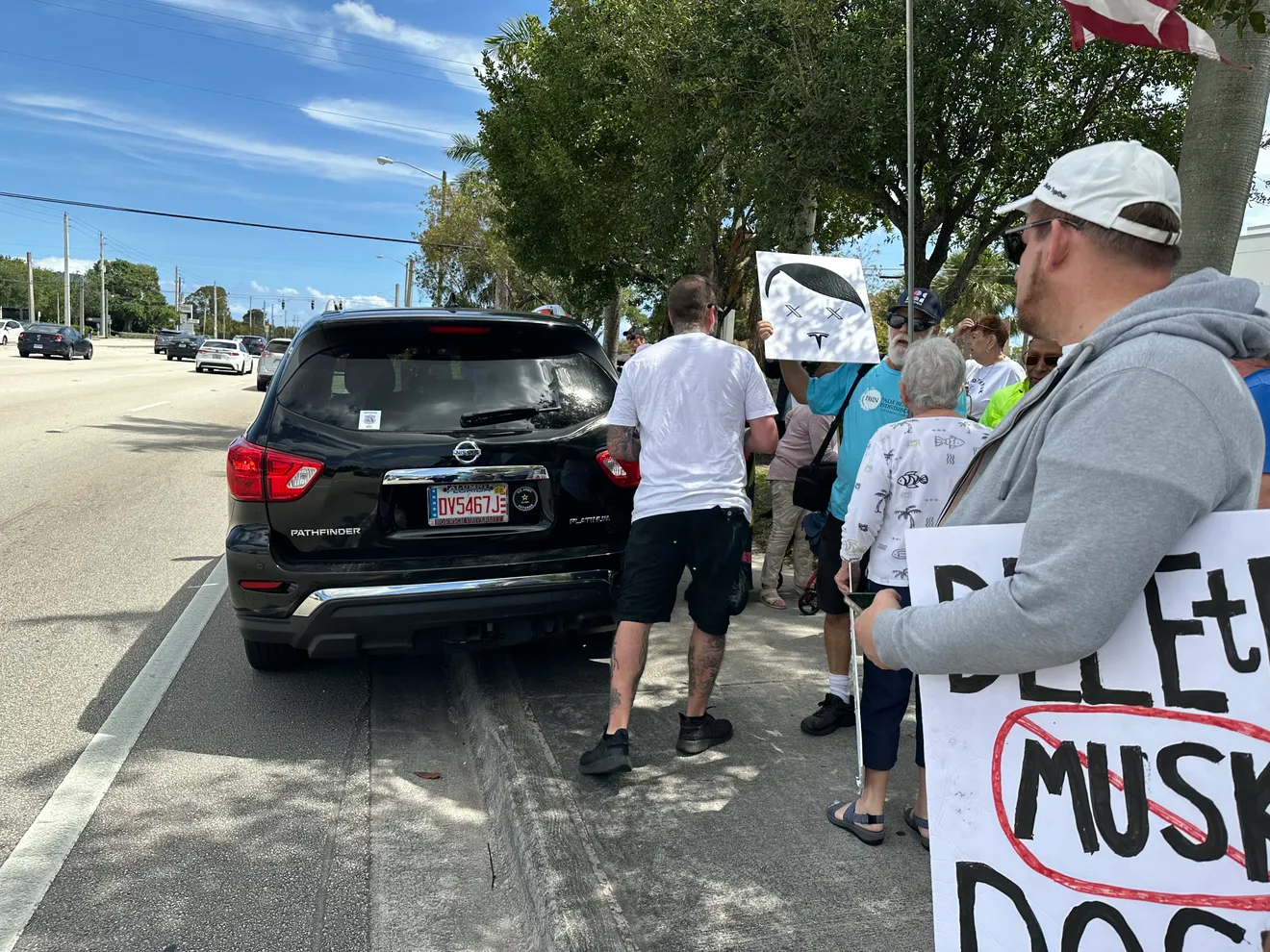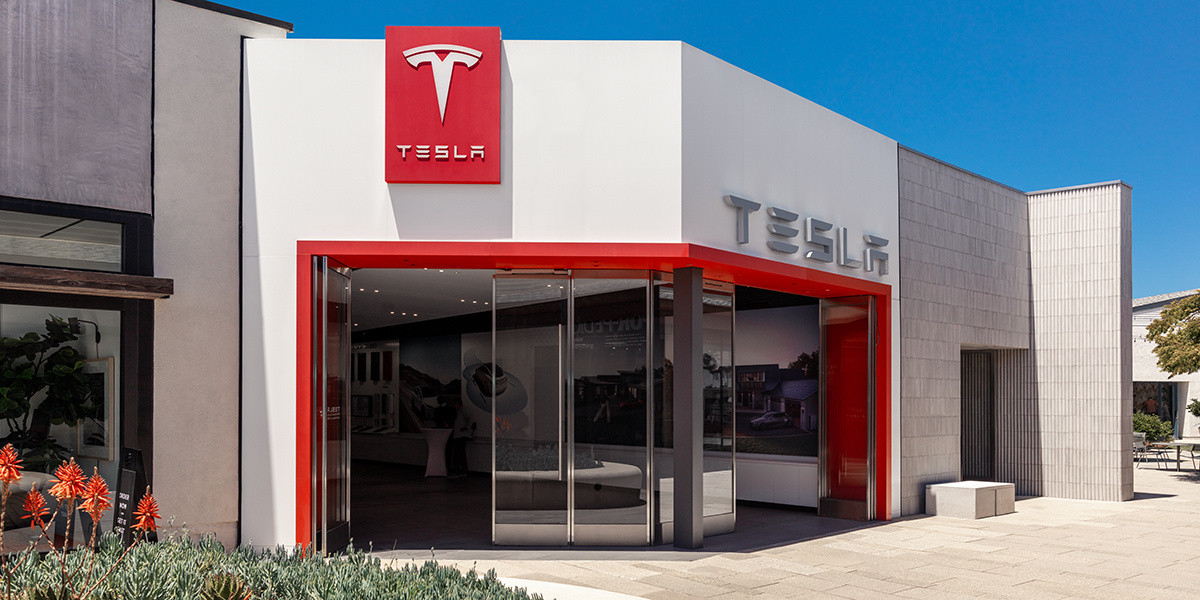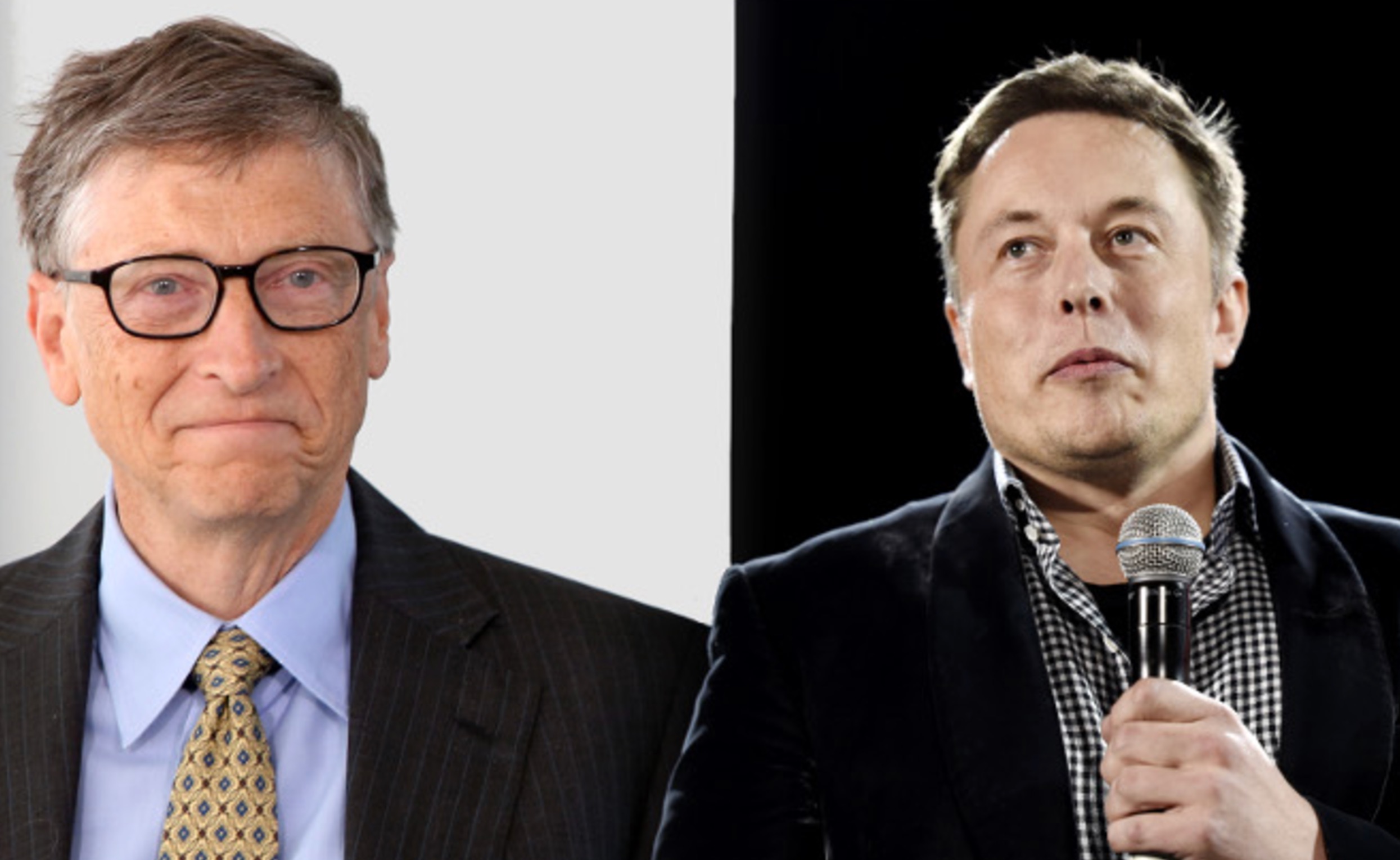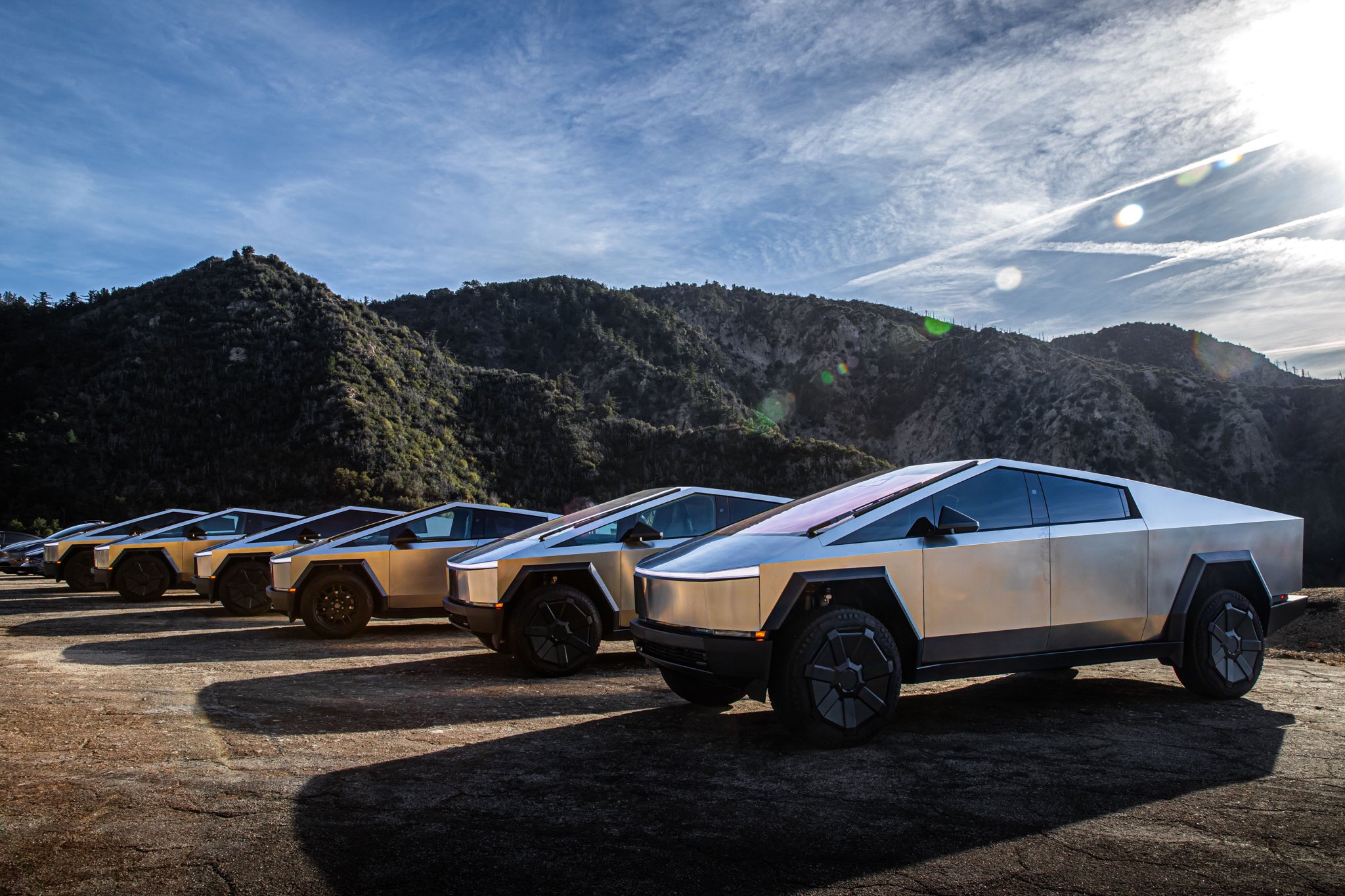News
Florida man charged after trying to hit Tesla protestors with car
Tesla protestors were nearly struck with the man’s car, though authorities say no one was injured.

A man in Florida has been charged with assault after attempting to drive into protestors outside of a Tesla store over the weekend, coming as the latest in ongoing protests and vandalism against CEO Elon Musk.
On Saturday, 44-year-old Andrew Tutil attempted to drive into protestors with his Nissan Pathfinder at the West Palm Beach Tesla store, although no one was injured, according to a report from Palm Beach Daily News. The store had around 150 protestors outside around 1:00 p.m., and Tutil reportedly drove slowly into the crowd before parking on the sidewalk and getting out.
“He drove into a crowd of senior citizens,” said Mark Offerman. “Everybody was able to move out, but two older women were really almost clipped. We immediately called the cops.”
After parking on the sidewalk where protestors had to jump out of the way, Tutil, a retired U.S. Army Captain, civil engineer, and supporter of Donald Trump, claimed that he was an employee of the Tesla store and that his brakes and electronics had malfunctioned, according to Offerman.
Palm Beach County records show that Tutil was later arrested and charged with first-degree felony aggravated assault with a deadly weapon without intent after police questioned Tutil and surrounding witnesses and reviewed photos and video footage.
The news comes as a wave of protests, acts of vandalism, and some violent encounters such as this one have been increasingly targeting Tesla stores in recent weeks against Musk and the Trump administration. Additionally, Musk’s work with Trump’s newly created “government efficiency” division has been a central theme in protests at Tesla stores, as federal workers have expressed criticism for the administration’s approach to “eliminating fraud and waste.”
🚨 President Trump on Tesla protests and vandalism:
— TESLARATI (@Teslarati) March 11, 2025
READ MORE ON TESLA PROTESTS: I went to an anti-Musk protest at a Tesla store in Colorado—here’s what I experienced
The widespread protests began in January, after Musk performed what many said looked like a Nazi salute at Trump’s inauguration ceremony, and after he spoke at a campaign event for the far-right German party Alternative for Germany (AfD). During the rally, Musk said that there was “too much of a focus on past guilt and we need to move beyond that,” which many claimed was in reference to Nazi Germany.
The so-called “Tesla Takedown” movement launched over the past several weeks is targeting around 500 separate protests across 277 stores around the U.S. The Palm Beach protest on Saturday was just one of a handful in Florida alone, including those in Gainesville, Jacksonville, Merrit Island, and Sarasota, to name a few.
One protestor at a Tesla store in Colorado earlier this month told Teslarati that she was protesting Musk because she was “highly concerned that our Constitution is being ignored,” adding that “it’s dangerous to have power rest in a handful of ultra-wealthy people.”
Others at the event highlighted Musk and Trump’s attacks on queer, trans, and non-binary people, as well as the administration’s recent controversies with Ukraine President Volodymyr Zelenskyy, and claims that the President is aligning with Russia President Vladimir Putin, as a few of the major reasons they were protesting at the Loveland Tesla store.
Musk has mostly deflected and made light of claims of his alignment with Nazis, while the public has been polarized on defending or condemning these and other actions.
The Tesla CEO was defended by Israel Prime Minister Benjamin Netanyahu, who said he was being “falsely smeared” immediately following the inauguration event. While the Anti-Defamation League (ADL) also went on to defend the action as an “awkward gesture,” the group has since condemned some of Musk’s more recent posts making light of genocide.
Earlier this month, Musk reposted then deleted a screenshot shared by X user Rothmus claiming that “Stalin, Mao and Hitler didn’t murder millions of people,” but that “their public sector workers did.”
“It is deeply disturbing and irresponsible for someone with a large public platform to elevate the kind of rhetoric that serves to undermine the seriousness of these issues,” the ADL wrote in a response on X.

Credit: Rothmus/Alice Smith (via Elon Musk repost on X)
In addition to what have largely appeared to be peaceful protests at Tesla stores, a number of acts of vandalism, including graffiti, arson, and some even more violent assaults involving weapons, have been targeting the automaker’s locations around the world.
Multiple people were taken into custody following repeated arson and graffiti at a Tesla store in Colorado within the past few weeks, while multiple Tesla vehicles have been set on fire at stores, and one Tesla store has been shot at. Owners of Tesla’s vehicles have also been targeted in public, with some being captured on Sentry Mode keying or tagging the vehicles.
The Trump administration has also started labeling such attacks against Tesla as “domestic terrorism,” and the Federal Bureau of Investigation (FBI) has started investigating several of the events, including one involving two Cybertrucks that were set on fire in Seattle and another at a store in Oregon that was shot at twice in a few weeks.
Tesla’s Giga Berlin director responds to anti-Musk criticism

News
Tesla owners could be impacted by new EV tax credit extension rule
We confirmed with a Tesla Sales Advisor that any current orders that have the $7,500 tax credit applied to them must be completed by December 31, meaning delivery must take place by that date. However, it is unclear at this point whether someone could still claim the credit when filing their tax returns for 2025 as long as the order reflects an order date before September 30.

Tesla owners could be impacted by a new EV tax credit rule, which seems to be a new hoop to jump through for those who benefited from the “extension,” which allowed orderers to take delivery after the loss of the $7,500 discount.
After the Trump Administration initiated the phase-out of the $7,500 EV tax credit, many were happy to see the rules had been changed slightly, as deliveries could occur after the September 30 cutoff as long as orders were placed before the end of that month.
However, there appears to be a new threshold that EV buyers will have to go through, and it will impact their ability to get the credit, at least at the Point of Sale, for now.
Delivery must be completed by the end of the year, and buyers must take possession of the car by December 31, 2025, or they will lose the tax credit. The U.S. government will be closing the tax credit portal, which allows people to claim the credit at the Point of Sale.
🚨UPDATE: $7,500 Tax Credit Portal “Closes By End of Year”.
This is bad news for pending Tesla buyers (MYP) looking to lock in the $7,500 Tax Credit.
“it looks like the portal closes by end of the year so there be no way for us to guarantee the funds however, we will try our… pic.twitter.com/LnWiaXL30k
— DennisCW | wen my L (@DennisCW_) December 15, 2025
We confirmed with a Tesla Sales Advisor that any current orders that have the $7,500 tax credit applied to them must be completed by December 31, meaning delivery must take place by that date.
However, it is unclear at this point whether someone could still claim the credit when filing their tax returns for 2025 as long as the order reflects an order date before September 30.
If not, the order can still go through, but the buyer will not be able to claim the tax credit, meaning they will pay full price for the vehicle.
This puts some buyers in a strange limbo, especially if they placed an order for the Model Y Performance. Some deliveries have already taken place, and some are scheduled before the end of the month, but many others are not expecting deliveries until January.
Elon Musk
Elon Musk takes latest barb at Bill Gates over Tesla short position
Bill Gates placed a massive short bet against Tesla of ~1% of our total shares, which might have cost him over $10B by now

Elon Musk took his latest barb at former Microsoft CEO Bill Gates over his short position against the company, which the two have had some tensions over for a number of years.
Gates admitted to Musk several years ago through a text message that he still held a short position against his sustainable car and energy company. Ironically, Gates had contacted Musk to explore philanthropic opportunities.
Elon Musk explains Bill Gates beef: He ‘placed a massive bet on Tesla dying’
Musk said he could not take the request seriously, especially as Gates was hoping to make money on the downfall of the one company taking EVs seriously.
The Tesla frontman has continued to take shots at Gates over the years from time to time, but the latest comment came as Musk’s net worth swelled to over $600 billion. He became the first person ever to reach that threshold earlier this week, when Tesla shares increased due to Robotaxi testing without any occupants.
Musk refreshed everyone’s memory with the recent post, stating that if Gates still has his short position against Tesla, he would have lost over $10 billion by now:
Bill Gates placed a massive short bet against Tesla of ~1% of our total shares, which might have cost him over $10B by now
— Elon Musk (@elonmusk) December 17, 2025
Just a month ago, in mid-November, Musk issued his final warning to Gates over the short position, speculating whether the former Microsoft frontman had still held the bet against Tesla.
“If Gates hasn’t fully closed out the crazy short position he has held against Tesla for ~8 years, he had better do so soon,” Musk said. This came in response to The Gates Foundation dumping 65 percent of its Microsoft position.
Tesla CEO Elon Musk sends final warning to Bill Gates over short position
Musk’s involvement in the U.S. government also drew criticism from Gates, as he said that the reductions proposed by DOGE against U.S.A.I.D. were “stunning” and could cause “millions of additional deaths of kids.”
“Gates is a huge liar,” Musk responded.
It is not known whether Gates still holds his Tesla short position.
Cybertruck
Tesla Cybertruck gets small change that makes a big difference

Tesla made a change to the Cybertruck, and nobody noticed. But to be fair, nobody could have, but it was revealed by the program’s lead engineer that it was aimed toward simplifying manufacturing through a minor change in casting.
After the Cybertruck was given a Top Safety Pick+ award by the Insurance Institute for Highway Safety (IIHS), for its reputation as the safest pickup on the market, some wondered what had changed about the vehicle.
Tesla makes changes to its vehicles routinely through Over-the-Air software updates, but aesthetic changes are relatively rare. Vehicles go through refreshes every few years, as the Model 3 and Model Y did earlier this year. However, the Cybertruck is one of the vehicles that has not changed much since its launch in late 2023, but it has gone through some minor changes.
Most recently, Wes Morrill, the Cybertruck program’s Lead Engineer, stated that the company had made a minor change to the casting of the all-electric pickup for manufacturing purposes. This change took place in April:
We made a minor change on the casting for manufacturability in April. Our Internal testing shows no difference in crash result but IIHS only officially tested the latest version
— Wes (@wmorrill3) December 17, 2025
The change is among the most subtle that can be made, but it makes a massive difference in manufacturing efficiency, build quality, and scalability.
Morrill revealed Tesla’s internal testing showed no difference in crash testing results performed by the IIHS.
The 2025 Cybertruck received stellar ratings in each of the required testing scenarios and categories. The Top Safety Pick+ award is only given if it excels in rigorous crash tests. This requires ‘Good’ ratings in updated small and moderate overlap front, side, roof, and head restraints.
Additionally, it must have advanced front crash prevention in both day and night. Most importantly, the vehicle must have a ‘Good’ or ‘Acceptable’ headlights standard on all trims, with the “+ ” specifically demanding the toughest new updated moderate overlap test that checks rear-seat passenger protection alongside driver safety.








